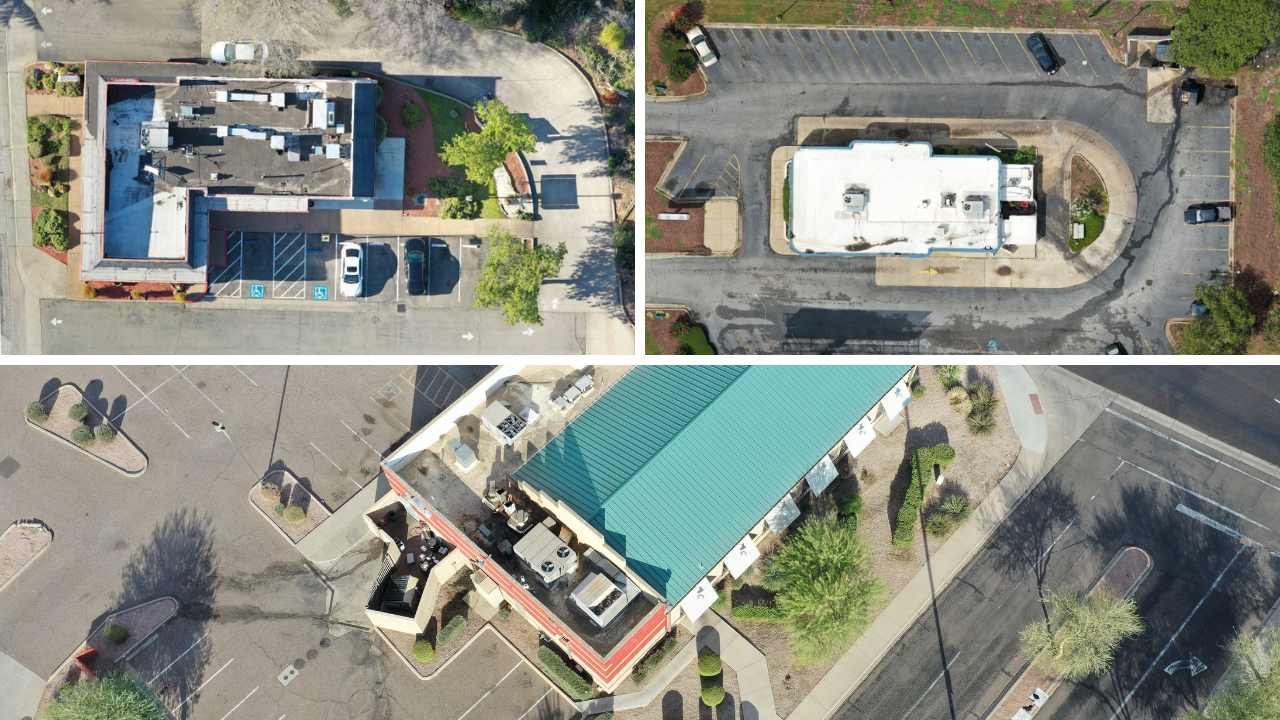According to a white paper published by Levitate Capital, the global commercial drone market was valued at $3.4 billion in 2020. They predict that the industry will reach $36 billion by 2030 at a 27% compound annual growth rate (CAGR). Enterprise drone technology, software, and services have reached an inflection point and are rapidly changing the way organizations do business -- helping them better manage their workforce, saving time, capital, opex, and increasing efficiency. Drone-assisted facility audits are just one example of how drone services are helping organizations audit their facilities safely, efficiently, and cost-effectively.
By implementing regular drone flights, facility managers can audit exterior property conditions remotely, saving travel costs and time traditionally spent on-site. Drone property inspections can be completed in a matter of minutes by a single FAA-certified drone pilot. Automated flight planning eliminates the possibility of human error and creates consistent and repeatable results. A remote pilot can fly the job with very little manual flying or manipulating the preset flight plan, the pilot simply executes an automated flight plan and monitors the drone flight with the ability to safely intervene if necessary. By comparison, traditional inspection methods are time-consuming and costly, often incurring hefty industry-expert supplier invoices. Hands-on inspections can also put employees in dangerous situations on roofs and on ladders that increase the possibility of incidents and injuries, not to mention inconsistent data and feedback. By incorporating drones into your audit process, facility managers can create more dependable and accurate data, improve safety, and minimize the risk of accidents during audits.
Standalone restaurants have multiple exterior audit components, including the building structure, landscaping, parking lot, lighting and signage. All of these items require regular inspection and maintenance. High-resolution drone photography allows facility managers to review and assess the condition of many items at once, saving time and optimizing productivity. Defects can be more easily identified with the help of drone photography and can help proactively identify where improvements need to be made. Drone images are typically 20 megapixels or more, which enables the facility manager to zoom in and inspect fine details that aren’t obvious in a boots-on-the-ground audit. Aerial photography captures the harder-to-reach areas such as rooflines, rooftops, and facades. Identifying defects on these critical building components can help stave off more significant problems such as leaky roofs, interior and exterior moisture damage, and overall condition deterioration.
Drones equipped with thermal cameras can capture signs of heating and cooling loss on roofs and around windows and can even identify moisture trapped beneath roof membranes. Heating inefficiencies can point to problems such as seal failure around windows, moisture damage on roofs due to failed seams or punctures in roofing membranes, and cracks in your building’s facade. Identifying these defects early can allow for quick remediation, preventing further damage, extending the life of critical structures such as roof and wall systems. Early detection and remediation will maximize your building’s overall performance.
When inspecting drone data, images can be reviewed individually or in an orthomosaic, which can expedite the inspection process. An orthomosaic, or orthophoto, is a single image composed of many images that have been digitally stitched together and corrected for lens distortion, camera tilt, and perspective (also known as orthorectified). This two-dimensional digital representation of the restaurant, parking lot, and its grounds provides facility management professionals with an archivable single file that documents the exact condition of the restaurant as it exists at the moment of capture. A facility manager can share the file, attach it to the audit report, or compare multiple audit dates to one another. As an added benefit, having a record of your property condition in a digital format can be very helpful in providing proof of baseline condition when processing insurance claims for storm damage or other incidents impacting your facility’s exterior.
Defects that can be identified in a drone photography facility audit include items such as:
Faded Parking Lot Striping
Includes ADA markings and signage, may lead to poor parking jobs, and may increase the potential for collision incidents in your parking lot.
Parking Lot Damage
Cracked asphalt, potholes, stains, sidewalk issues, and ADA-related ramp damage.
Poor Parking Lot Lighting and Coverage
Branded illuminated sign condition issues, dim lighting, and dark spots in the parking lot, ideal for crimes such as robbery, vehicle theft, car break-ins, drug deals, and drug use.
Roofing Issues
From stray items like frisbees and tree limbs to pooling water and grease buildup near venting.
Signage Issues
Identify missing, damaged, or off-standard signage, including ADA and company-branded signage.
Landscaping Issues
Dead/dying plants, landscaping damage, overgrowth.
Heating/Cooling Inefficiencies
Heat loss around windows/doors.
Comparing orthorectified drone data over time allows facility managers to review condition changes and plan for capital projects accordingly. Depending on the property’s specific needs, you may want to schedule drone inspections monthly, quarterly, or biannually. Biannual inspections would be a good starting point when developing a maintenance schedule for drone facility audits. The National Roofing Contractors Association recommends inspecting your roof twice a year, just after winter and at the end of summer. These recommended time frames would be ideal for developing your drone inspection schedule.
Drone technology is a powerful resource that drives efficiency and productivity, with robust visual data, enabling facility managers to make informed decisions regarding maintenance and capital project planning.
Learn more about DroneUp’s flight services and products by contacting us here.

